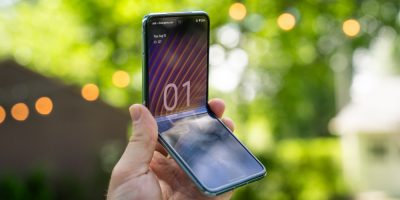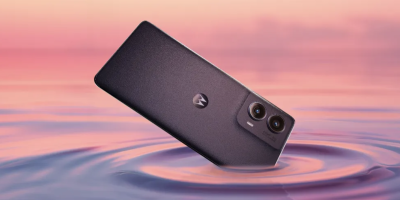As soon as Google announced Ice Cream Sandwich, Android users everywhere began asking, “when can I get it on my phone?” While most major carriers have committed to getting the update out to many of the big-name devices currently on the market, we are still quite a way off from getting Android 4.0 on any currently available phone. Why? Motorola addresses the issue head on, detailing their process for getting a new Android update prepped and beamed out to users.
Motorola has divided the process into four steps:
- Adapt the source code to device hardware, add custom UI (when applicable) and tweak features
- Perform in-house bug testing to reach a stable release candidate
- Submit software upgrade for carrier approval and issue a pre-release version to a small customer base for real-world testing
- Release Android 4.0 to the masses
Yes, that isn’t telling us much more than we already knew, but it does give you an idea of how much work really goes on. It is impossible for a manufacturer to simply push an update the moment they receive the source code from Google. Things just don’t work that way. A blog post at Motorola goes into far more detail than above, and Sony Ericsson has provided a similar overview. All that said, don’t expect any Ice Cream Sandwich to grace older handsets any sooner than early next year. We’re guessing we are still at least a couple months away at this point.
[via TechCrunch]











They could still do it faster. We don’t care about their customization by the way. They should just release apps on the market that we can install (or not). No need to bundle them with the phone.
In the US (don’t know about other countries) the big hold up is item 3. You and I are not Motorola’s customer. Verizon, ATT and Sprint are. The people that ask for the latest version are insignificantly small. If you want fast official updates, get a Nexus phone. Last I checked none of those handsets set sale records. So, people are voting with their wallet. I’ll use VZW for an example, once ics dropped, they have to make sure that their applications are compatible with it. You may not like them. Hell, you may call them bloatware, but they make money for the carrier. There is an article here on phandroid, vzw best customer service, att worst. Think about that.. vzw customers are happy with vzw (even though they are some of worst in updating their phones). Att has been worse for years, yet people don’t leave, go figure.
Maybe more people would buy Nexus devices if they released on time and on many carriers.
In Canada it took 8 months to get the Nexus One (on minor carriers) and 4 to get the Nexus S (on major carriers this time).
The Galaxy Nexus just launched but on a single carrier.
I think people looking for Android devices do prefer Nexus devices. But they won’t always switch carrier or wait months for it.
I think that’s the issue. It takes a couple of cycles for the carrier to notice. If we we all bought Nexus devices, even 8 mo after, I bet that we would see them come out on more carriers and faster. Also, the carriers know that you are not leaving. So, what’s their incentive to do anything differently?
I don’t think most people are willing to spend money in order to teach a lesson to their carrier. If people buy Nexus devices 8 months late, the only thing the carrier will learn is that it’s ok to release devices late anyway
More importantly is an official list of devices that will or will not get the update. Every manufacturer should at least let us know which ones they know they will not update.
Thanks Sony for an official list.
The linked blog post does provide such a list. It consists of the RAZR, XOOM, and Bionic, with a note that other devices may be added in the future.
Here’s what they should do:
Step 1. Slow your roll and put out better quality.
Step 2. Tell Verizon their Droid Marketing sucks and it drives women away.
Step 3. Build a Superphone that we all know you can build.
Step 4. Put vanilla ICS on Superphone.
Step 5. Tell Verizon to up themselves on the encrypted bootloader
Step 6. Get new marketing consultants that can sell to women.
Step 7. Test Superphone to small customer base.
Step 8. Sell to masses.
Women aren’t allowed to buy things….
Obviously your wife or girlfriend doesn’t read these threads or you’d be sleeping with one eye open.
LMFAO
I’ve seen so many women with DROID’s… Quite a few with Android but DROID and DROID X mostly.
despite the irony of your name, I agree with this statement
I know a lot of women with Droids – while I would admit it is a more masculine advertising scheme, most people (men and women) couldn’t tell you the difference between a Droid and any Android phone, anyway
You’re spot on Horace. I consult for 20 or so people (family and friends) on phone choices. It’s more of them asking me questions, advice and what’s coming. More often then not, women just are turned off by Moto..be the advertising and/or the look of their handsets. They warm up to iPhone and Samsung phones nowadays and well HTC as well. Got 2 women waiting on the Nexus with me. 1 of them is considering the Rezound but neither liked the RAZR.
Pimpstrong, I would agree, as I’ve several women with Droids too, but you have to remember Verizon’s product line when the Droid came out…it was horrid. The OG Droid was the one phone people got excited for that compared to the iPhone. Plus the Droid Does Marketing was brilliant.
So focusing on advertising for women only will drive sales? It’s usually men that are more interested in buying the next piece of tech gear the day it comes out, even if they just bought one a week ago. They’re advertising to the right place already.
Take the HTC Rhyme for instance, that was geared towards women, didn’t sell for crap.
The iphone sells like hot cakes. Most of iphone users i know are female and they bought it because it’s “cool”. I don’t see any Android phone being marketted as “fashion statements.” HTC is starting to do that. Making commercials that show a lifestyle. Like the ad for the Rezound, it has Beats!.. tells you nothing else about the phone.
Great point about HTC. Be interesting to see how that marketing goes for the Rezound.
HTC Incredible sold pretty well with women. But the Android sales leader the Samsung Galaxy sold very well with women. Why? Because it wasn’t sold like a frickin’ power tool and it as aesthetically pleasing. Motorola has to increase sales and the same tired advertising is and has been failing them. I think you also underestimate women’s enthusiasm for tech gear. True that typically men get more into it, but that’s the purpose of good marketing…to get ALL excited about a product. Peace.
I wish they would just skip the “Add Custom UI” part. And I love that Moto adds “When Applicable”. Doesn’t all their devices have some sort of UI on it, which is why everyone with a Moto phone has to wait years for an OS update?
My Droid 1 and fiancé’s Triumph have no custom UI.
But both are scarce on updates.
No reason it should take longer than 1 to 2 months from release of source…tops.
My way would be:
Step 1. Send out the already tested stock Android version
End of F-ing story Moto!
“Submit software upgrade for carrier approval…”
THIS should NOT be necessary.
um but dont we think this could be the one big issue compared IOS you have to go through bs instead of plugging it in or even over wifi i mean even WINDOWS lets u do it faster
Well, it is. iOS you have 8 devices to test and release for, and they’re all known in advance by the core development team. (iPad 2, 1, iPhone 4s, 4, 3Gs, iPod Touch 4s, 4, 3)
Windows quietly sends the new version of Windows to PC manufacturers and developers in advance of the formal release date, and standard hardware between all the manufacturers means there’s not as much to be done post-release.
Google announces the developer-ready version of the OS and that it will be on the developer hardware *before* the test cycles even begin. So you’re aware of the new release much earlier in the cycle than you are with iOS and Windows.
How about, take Googles stable release,
Test to make sure it works on your phones
Send out stable release.